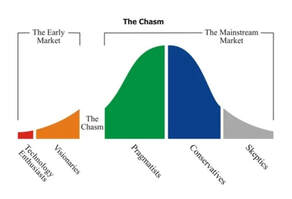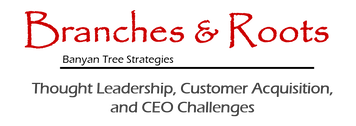 Are You a Pirate or a Cowboy? There was a romantic comedy that had a bit of a cult following in the early 90’s by the name of “The Princess Bride” with a mythical character that was known as the Dread Pirate Roberts. He had a habit of telling his captives, “good night, sleep well for I will most likely kill you in the morning.” It was all an act, but he later explained that establishing a healthy sense of fear in people was the easiest way to lead them. Another movie that included people using a long journey to learn a little about themselves and leadership was "City Slickers" with Billy Crystal and Jack Palance. Palance is the sage cowboy who leads Crystal and his pals through a search for their one thing while managing a cattle drive. He used a group effort to help each individual find their role, and in the process the group became a team. Which leads us back to our question: which one are you and which environment do you prefer? A pirate ship or a cattle drive? Both are journeys, both have codes, and both have success that they can point to as validation for their way of life. Yet the two environments have stark differences. The pirate ship is a cauldron for bullies and the chief bully is the captain. On a pirate ship you are waging war both internally and externally at all times. There is blood everywhere and the sea is full of losers who have walked the plank. The funny thing about our work environments is that many people will tolerate bully behavior at work from a high functioning a..hole. The crazy designer, the coder who treats people poorly, or the sales person who crushes quota and everyone that comes in her path. Worse yet is the CEO who uses the term “radical candor” as a smoke screen to berate and belittle people who aren’t “all-in” at the company.  he hard part for the employee is that often times the pirates appear to be friendly and mostly human like in the “Pirates of the Caribbean” when the sun is out. They need people, lots of people, because they go through so many and thus they are very charming. Especially the CEO. But when the moon rises the pirates are all bones, and it is at that moment that the new employee realizes they have joined the wrong crew. In the right environment the employees are being challenged to push themselves on tasks that help the company achieve its goals and that also help identify the roles that each one is best suited to fill. The hero of the company is the product and the customer it serves, not the people at the company. Recently an open-source leadership outline of Bill Campbell’s work was compiled by the name of the Trillion Dollar Coach. It was compiled after 80 interviews of leaders that worked with Bill during his lifetime and include people from Google, Apple, and Intuit. We would like to think of Bill Campbell as the Cowboy leading all of us on the cattle drive of life. A place where through the hard work and the focus on the cattle you can find your role, and no amount of effort is spared in the saving of a lost member of the team or the herd. There are plenty of trials on a cattle drive but there are no planks to walk. If you want some tips on how to spot a pirate ship that is recruiting so you can avoid them, email us here.  The Hard Thing About Innovating Geoffrey Moore is a best selling author of books that focus on disruptive innovations and technology. His best seller is "Crossing the Chasm" and it addresses the issue of going from the early adopter category of customers to the bigger section of buyers labeled “pragmatists.” Recently, he posted a short piece on LinkedIn about this still pressing issue for all innovative companies. I posted a question to his post and as fortune would have it, he responded with an answer. Our interaction and his post is compiled here in a PDF. To read directly on LinkedIn click here. The interchange gave us confidence that we are in alignment with a great thinker and adviser to the CEO’s of companies like Microsoft and Salesforce. It also allowed for some reflection on just how much the phrase “sales and marketing” is out of date. Professionals used to call the category of customer acquisition Sales and Marketing. Sales was first and Marketing was next, second, or last depending on the company. Sales and its people were the heroes.  In the past ten years the script has flipped and we now live in a world of marketing and sales. In our world the word marketing really means Thought Leadership Marketing (TLM). TLM for some is crazy, because their marketing is all about sounds and movies and clicks and moving a human through a process like a sheep about to be sheered. Those processes matter mostly for very small dollar purchases. Our clients provide goods and services to enterprise customers with multiple decision makers who all have different professional biases and disciplines that they own in their roles as CFO, General Counsel, or COO. These professionals don’t make decisions based on catchy headlines and short videos, they read and analyze data and facts. They want to see case studies and interviews with people like them who are faced with similar issues. These C-level buyers respond to thought leadership, and it is through this medium that you can then earn an audience and begin your sales process. The two processes are different, but they fit nicely with each other when designed correctly. It starts with a thought leadership marketing story-line that your company produces and it moves to an enterprise sales process which focuses on alignment, belief, and urgency. If you know of a company that is innovating and struggling with the chasm as Moore describes we have a Thought Leadership Customer Acquisition Program that is made for building the bridge that leads your products and services into the large pool of customers that are the pragmatists. Questions That Have Been Making an Impact One of the benefits of being a consultant is that we are in a lot of different “team” rooms and, like the honey bee, pick up lots of different pollen/ideas from each team. We have noticed that the right question can really stimulate engagement, creativity, and accountability. Here are a few questions that stood out as being particularly effective.
We hope they help stimulate and foster dialogue that leads to positive actions.
0 Comments
Leave a Reply. |
Archives
November 2023
Categories
All
Complete Annual Newsletter Volumes
|

